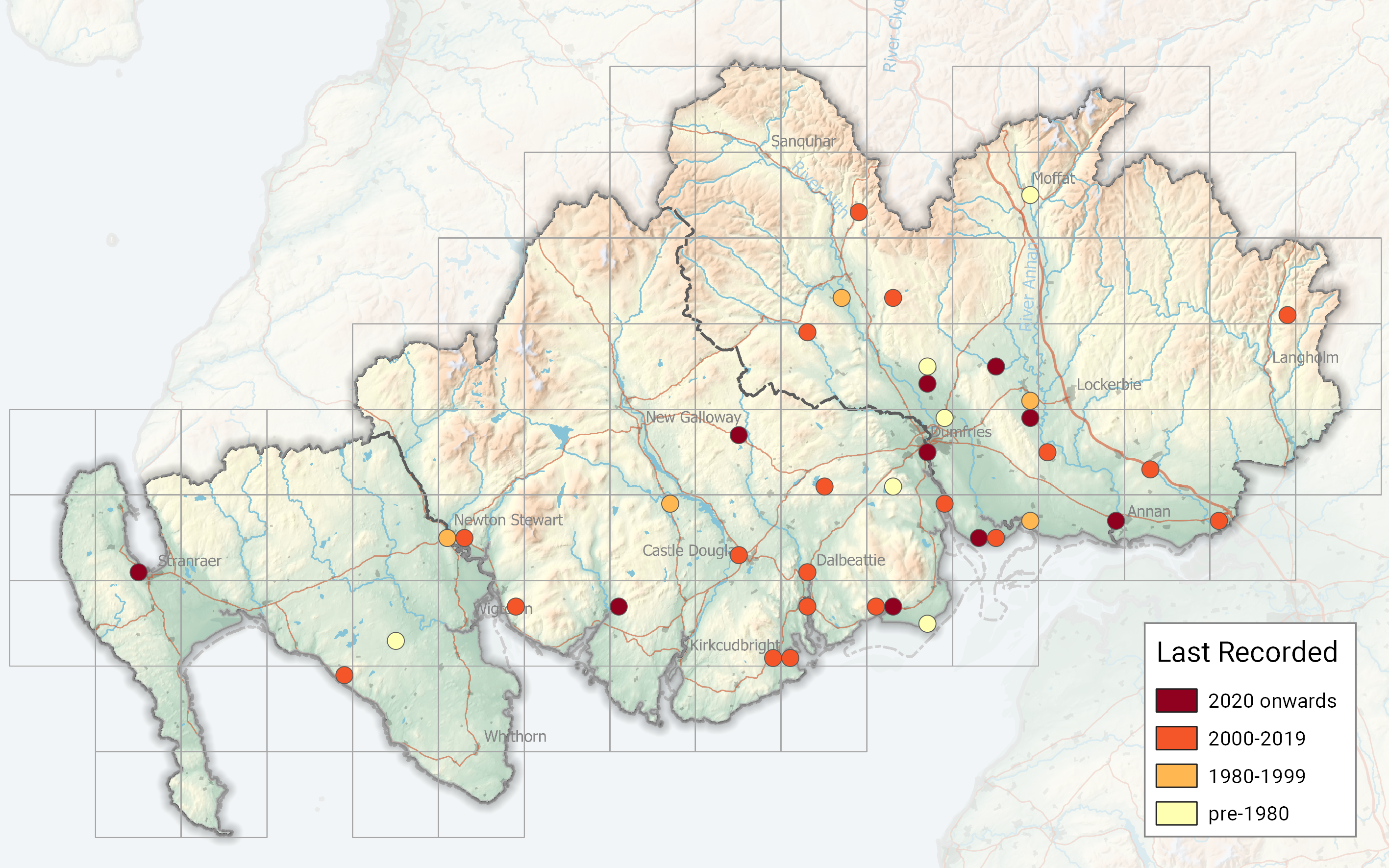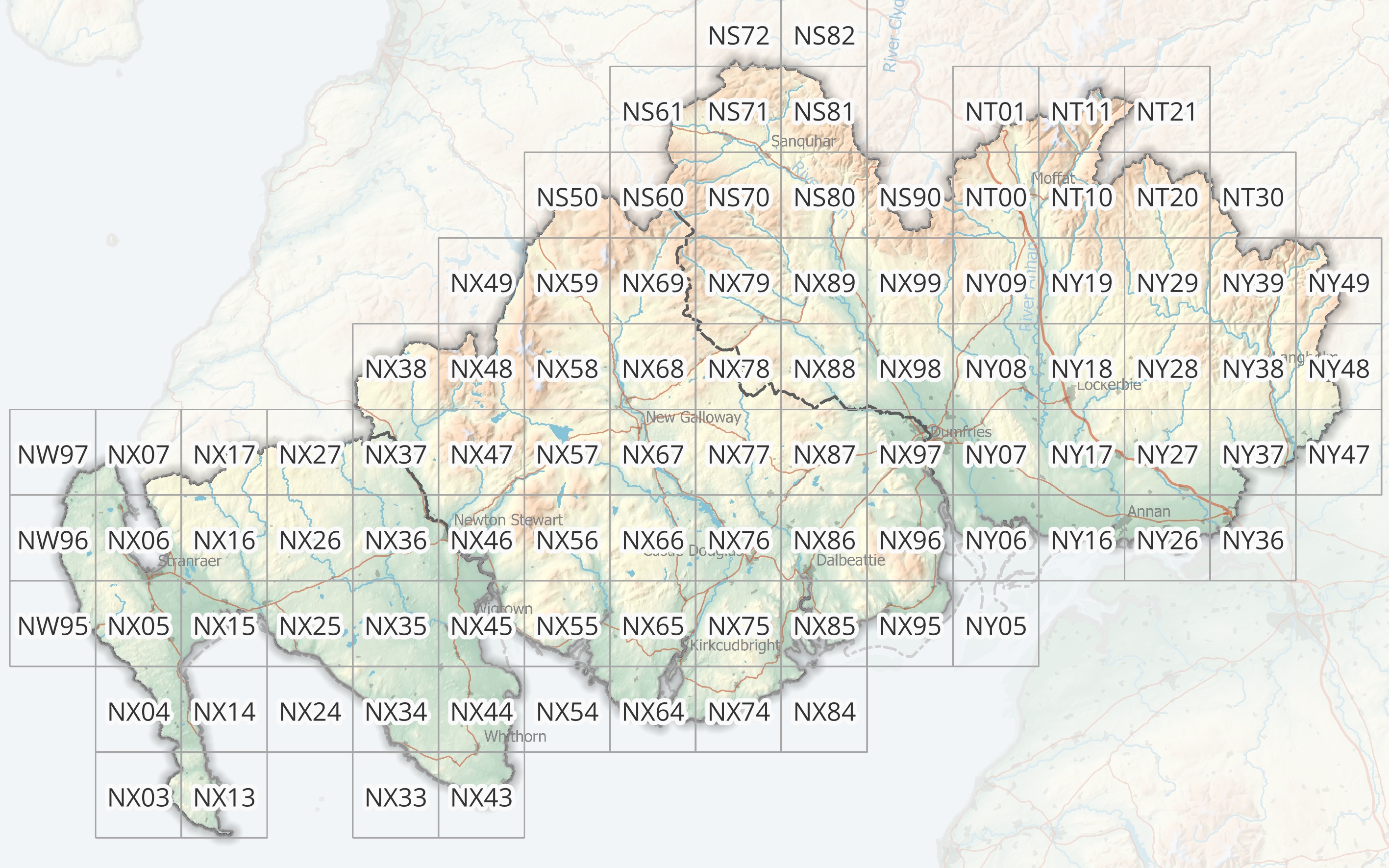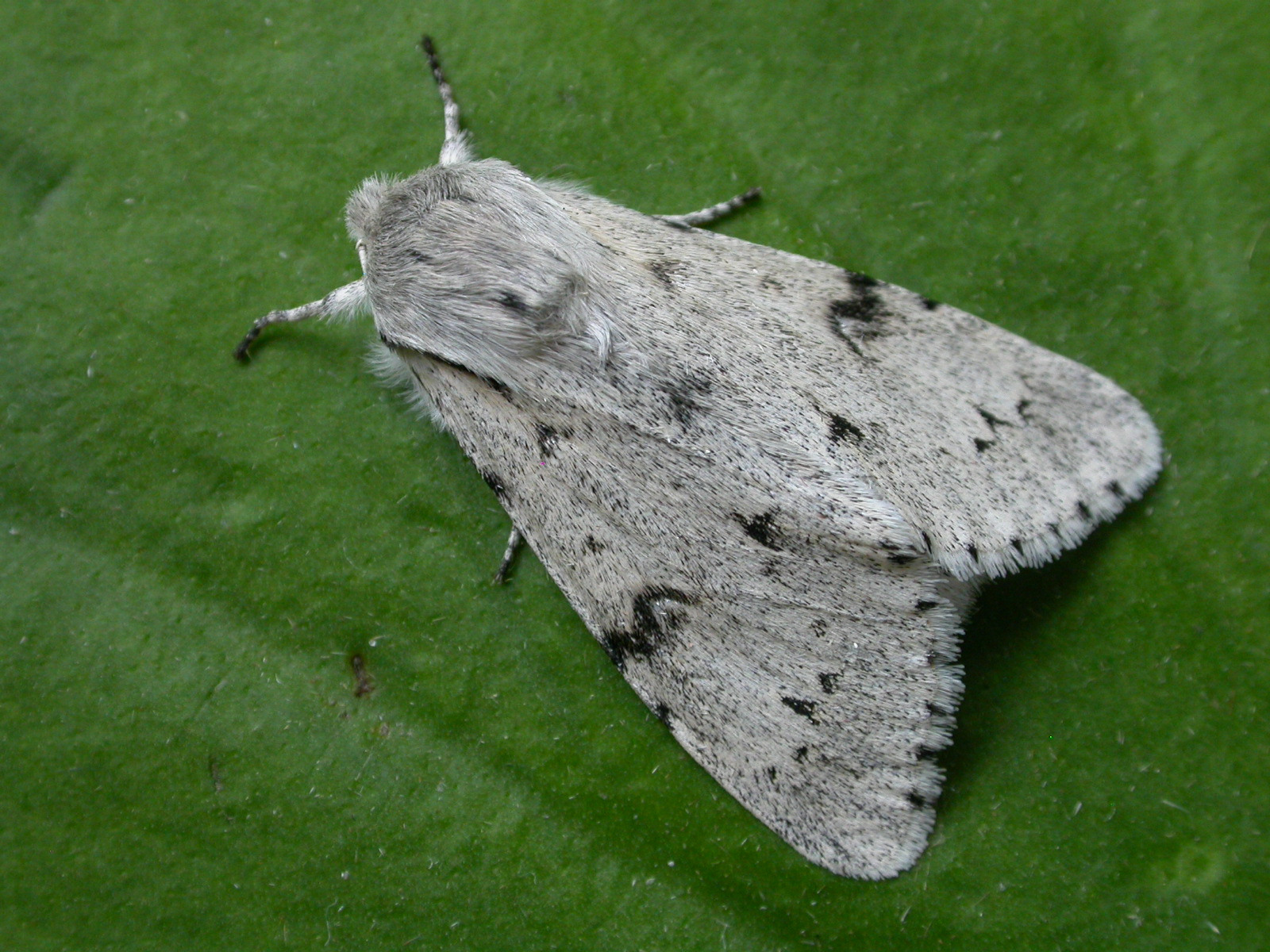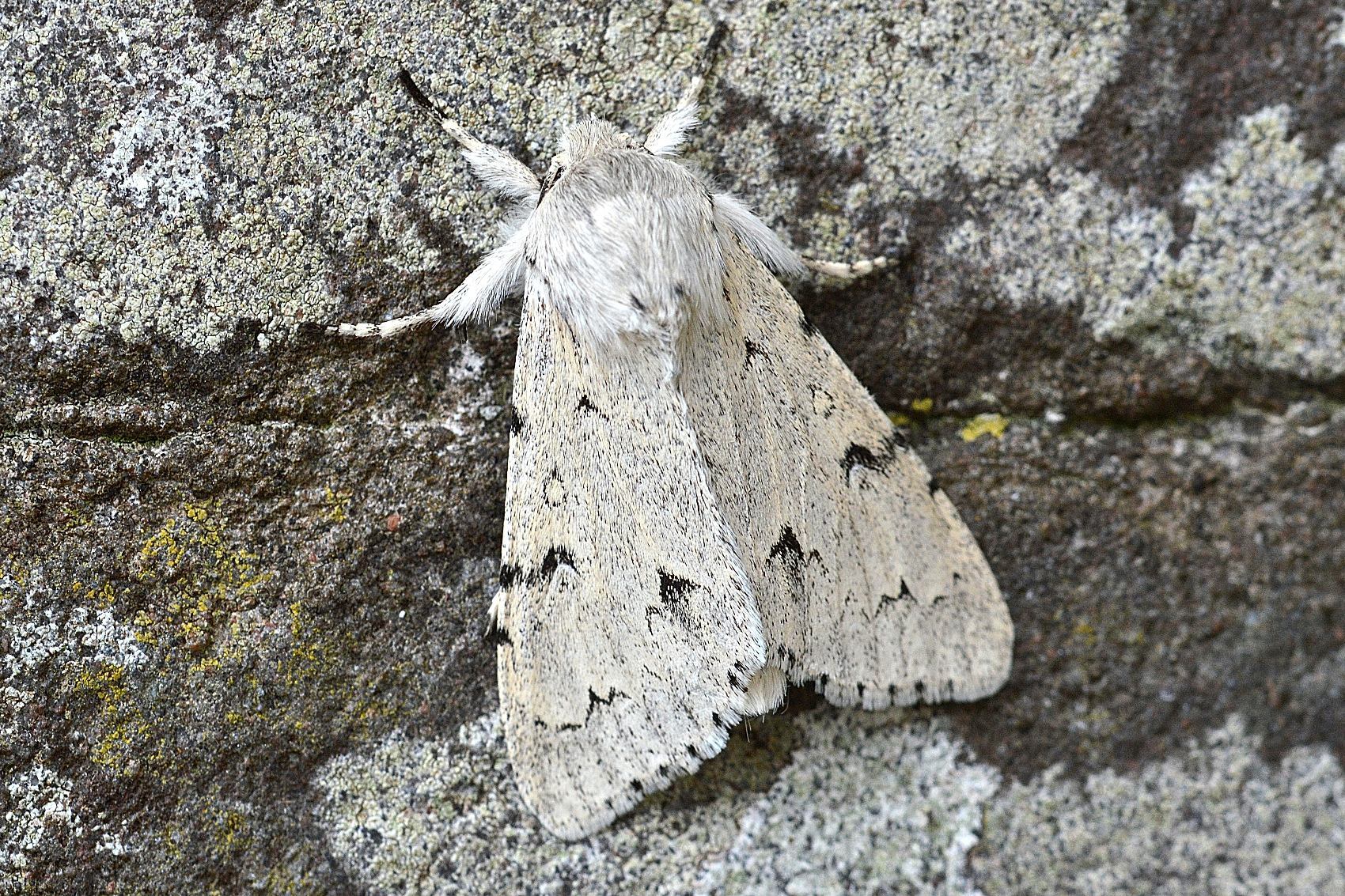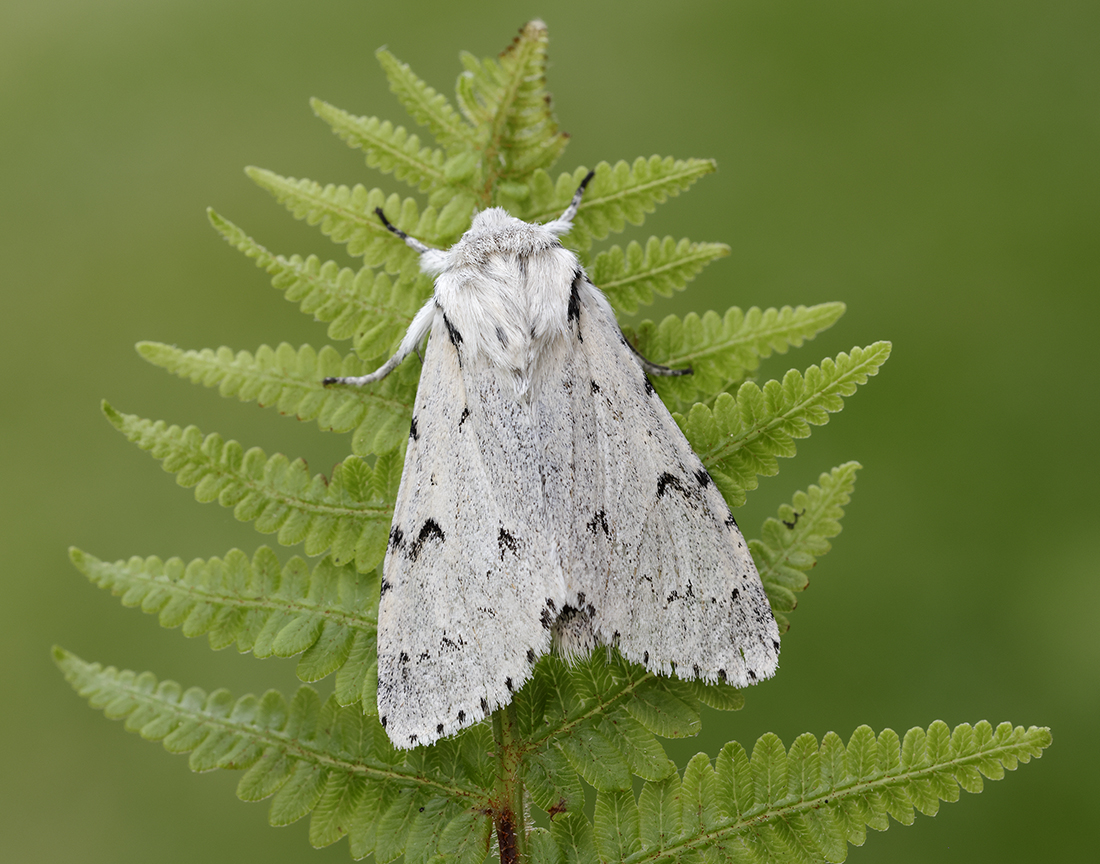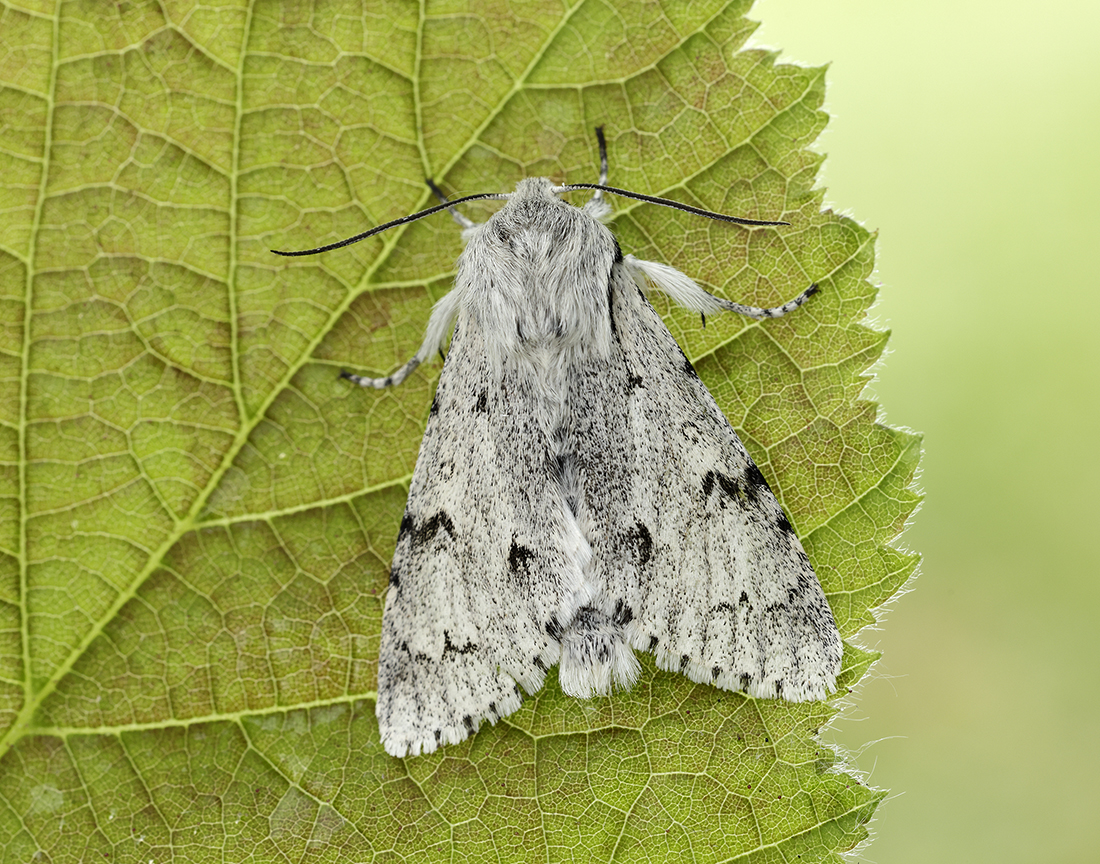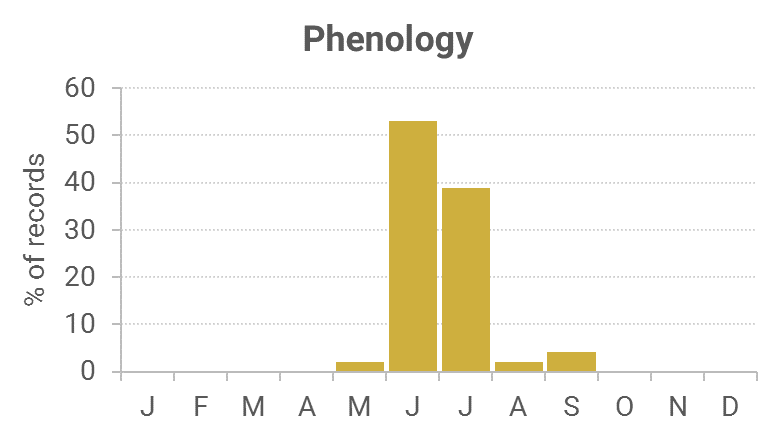Identification
The grey-dusted forewings with fine black markings, especially the black crescent by the kidney-mark are diagnostic.
Recording Method.
Attracted to light and sugar.
Life cycle
One generation. Overwinters as a pupa burrowed into rotten wood. Larvae are present July to early October.
Larval foodplants
Alder, Downy Birch, Grey Willow and Silver Birch.
Habitat
Broadleaved woodland, scrub and other places where the foodplants are found.
History
Somerville (1858) whilst on a visit to Moffat in August of that year had found the larvae on birch. Lennon (1863) had stated it was not common but had noted it at Heathhall (VC72). R. S. Gordon (1913) had stated it was rare around Corsemalzie, Wigtownshire, but had taken one at sugar on 29th June 1905. This record is not included in MOGBI for VC74. He added that several were bred from larvae taken there, some being of the yellow form.
David Cunningham (1949-50) recorded the first for Kirkcudbrightshire when he found it at sugar in Mabie Forest on 8th July 1950. He also found it on Tinwald Downs (VC72) the following year. From 1977-82 it was trapped at the Rothamsted station at Waterside Mains at Keir (VC72) followed by one on the Hensol Estate in early June 1984.
Further records followed through the 1990s and into the 21st century mainly where portable trapping had been carried out in Dumfriesshire and Kirkcudbrightshire. The only modern record for Wigtownshire is of a larva in Newton Stewart late August, 1991.

